This article is a translation of my travel guide for Fuerteventura (in Czech).
In October 2018 we spent almost three weeks in Fuerteventura, so I have lots of tips for interesting places and about Fuerteventura in general.
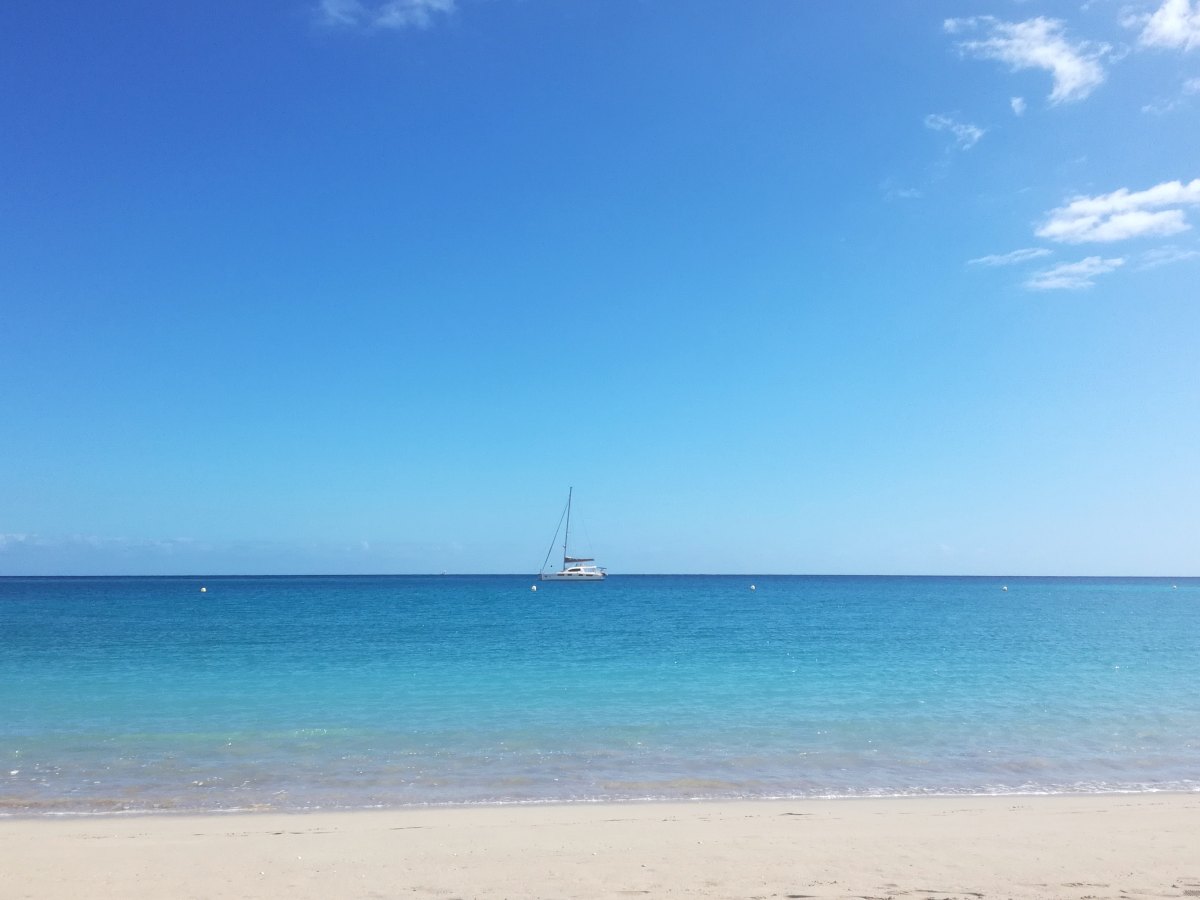
Traveling there - airline tickets, bus
You can fly to Fuerteventura directly from Prague, but one-way ticket costs around 7k CZK (280€) so in the end we flew with Ryanair from Berlin. One ticket from Schönefeld costs around 30€ and you can get there easily by Flixbus or Regiojet. You can also use Czech Rails (ČD) train - morning tickets at 6:30AM from Prague are quite cheap.
I already mentioned this tip in other post, but it is worth repeating here. At the airport, after passing through security, you can usually buy cheap bottles of water in the vending machine (0.5l for 1€ in Fuerteventura). On the other hand, in Schönefeld, you can bring an empty bottle through and refill it with the tap water after the security.
Fuerteventura Buses
Buses on Fuerteventura are operated by Tiadhe company. You can find timetables on their website - unfortunately, they provide only the departure times from the starting stop, not when the bus passes through each stop. You can buy the tickets at the bus (cash only).
Fuerteventura Ferries
After spending two weeks in Fuerteventura we went to Lanzarote for next two weeks and then back again. We took a ferry from Corralejo city to Arrecife. You can choose from three companies that service this route - Armas, Fred Olsen and Lineas Romero. Fred Olsen is the fastest but also the most expensive. We used Lineas Romero ferry both times (it costs 15€ per person). Their ferry is more of a tourist boat than a ferry (and they don't transport cars).
Fuerteventura Car Rental
We weren't on Fuerteventura only for holidays, but we also had to do some work at least part of each day, so we rented car for whole two weeks. Thanks to that we could work in the mornings and take trips in the afternoon (which would be much harder if we had to take a bus). It turned out that the most expensive option is renting for a single day. If you rent for a longer period, the price lowers considerably. Rental for two weeks cost us 220 € (+gas).
We rented the car at the airport from the Cicar company (we also used them in Lanzarote). They offer good insurance and they don't require you to have a credit card (debit card is OK). You can book the car in advance through the website to be sure they have it available for you. It will also speed up the rental process, because you can pre-fill all the info online and they will just check it. You can also add a second driver for free. We returned the car in Corralejo (you don't have to return it to the same office). The fuel level should be approximately same as when you were handed the car.
Careful: You should not drive the rental cars on the dirt roads - it is usually not covered by insurance (check the terms of your rental agreement).
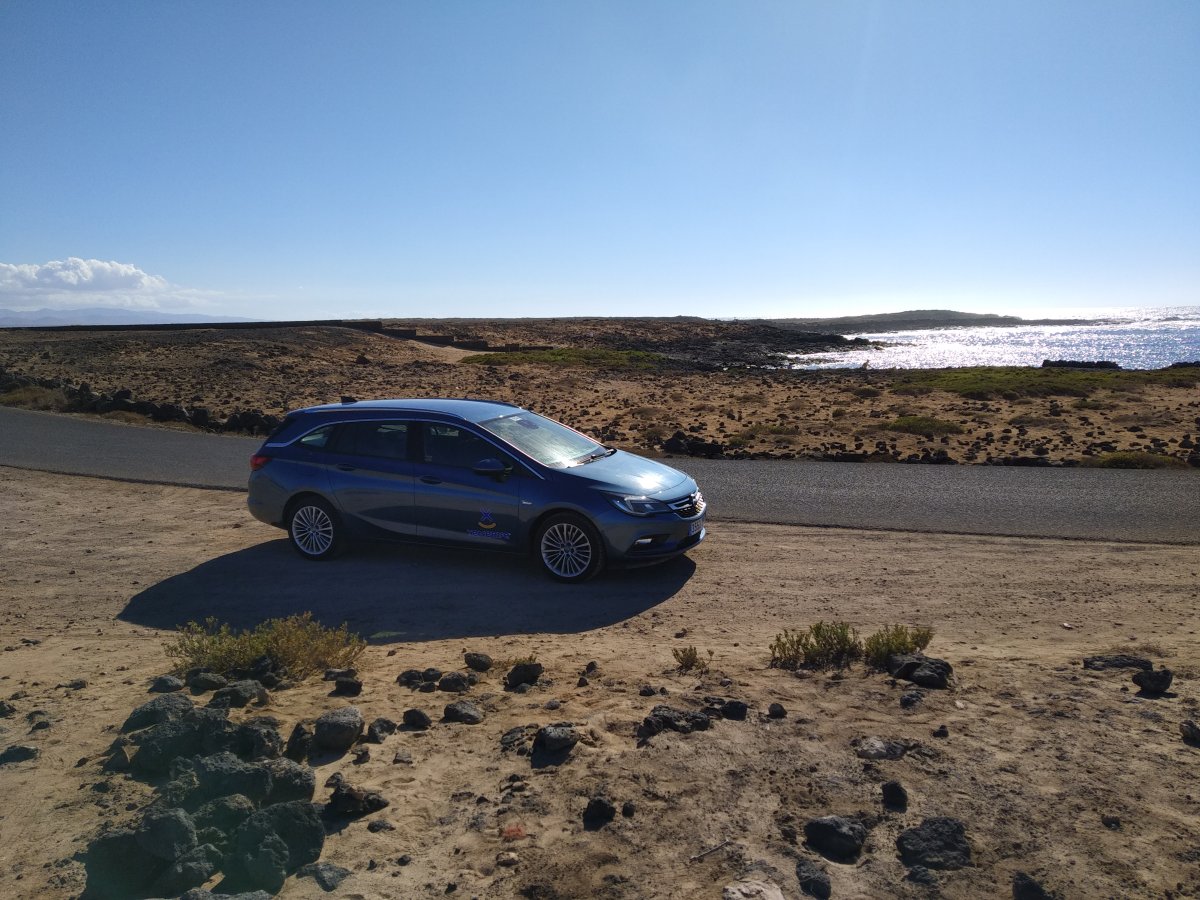
Weather
The weather was good for swimming all the time - temperatures around 24°C and hot when the sun shined. Temperatures at night were just below 20°C.
Fuerteventura food
Fuerteventura is renowned for its goat cheese - queso majorero (see below).
Tap water is desalinated, therefore it is not suitable for drinking and you must buy water in the supermarket. Surprisingly, the 8l barrels usually have better handle than the 5l ones, so despite being heavier, they are easier to carry.
Bigger supermarkets offer fresh fish and seafood. We usually buy precooked shrimp (langostino cocido, 9€/kg) or tuna steak (rodaja de atún, 12€/kg). This year we started buying octopus as well (pulpo cocido). You can buy a precooked whole tentacle or pieces. Just put it in the pan for a while with olive oil and add grounded sweet pepper (pulpo a la gallega).
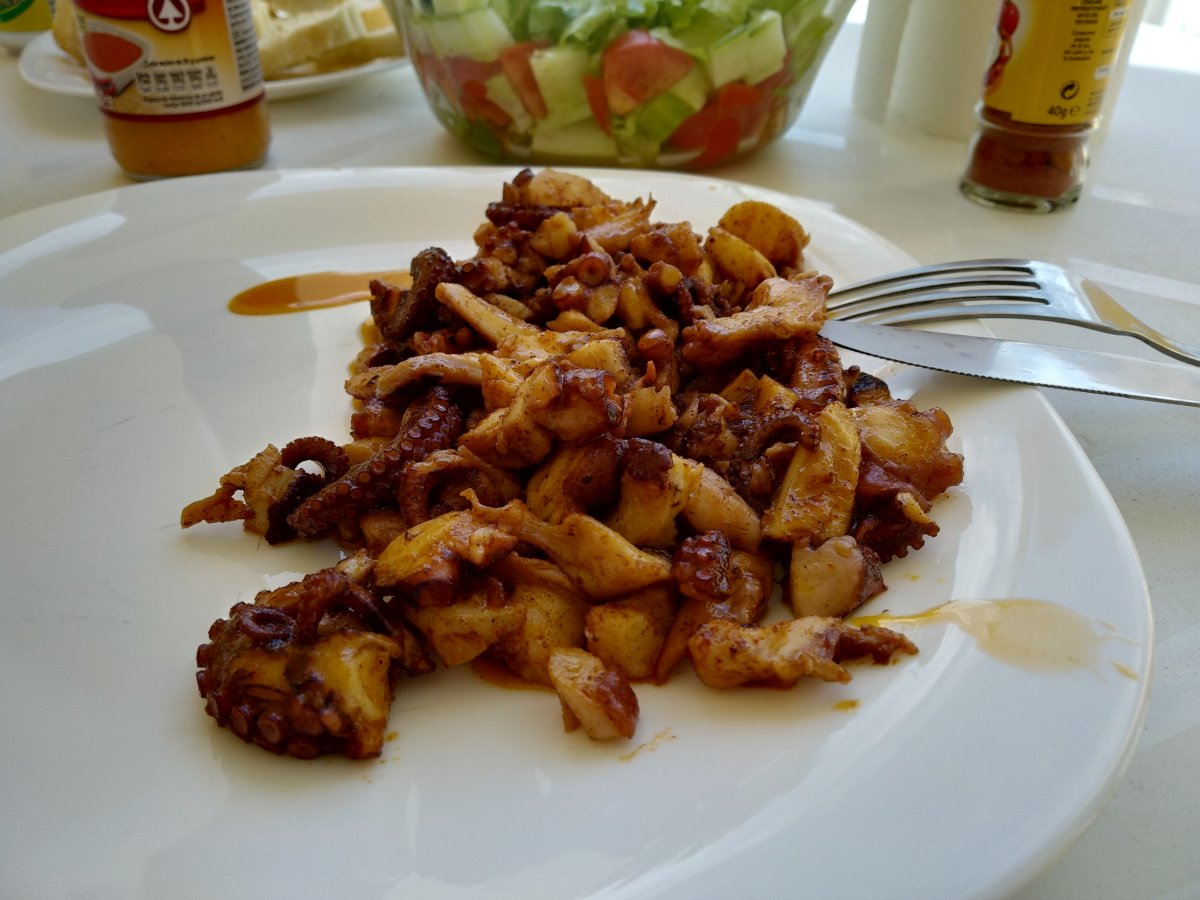
ATMs
Some Spanish banks charge an extra fee for a cash withdrawal (in addition to your bank fee). But the Cajamar Caja Rural bank does not charge the extra fee yet (I tested it with Revolut and Airbank card.)
Cities in Fuerteventura
Fuerteventura is a large island (the second biggest of the Canary Islands) and only 100 thousand people live there, so it is quite empty. We didn't want to spend that much time in car, so first week we stayed in the north and explored the places there and the second week, we stayed in the south and visited the places there. The cities in Fuerteventura are different from each other - ranging from locals-only to built-for-tourists.
El Cotillo
El Cotillo is a small town in the north where we spent the first week. As it is not overflowing with tourists, we would also consider it for a longer stay (month+). It has a great surfing beach on one side and the beach lagoons on the other side.
- Lagoons is a part of the beach which is protected by natural breakwater and shallows caused by low tide make it great for children.
- Castillo del Tostón - small fort with good views. Entrance fee is 3€, can be paid only by card (no cash).
- El Goloso de Cotillo - café where we went at least five times (during one week!)
- Kalima - good tapas bar

Corralejo
Corralejo is resort popular among British tourists. We didn't like the beach much. And it is more expensive in comparison with El Cotillo.
Puerto del Rosario
Puerto del Rosario is the capital of Fuerteventura with very few tourists. We spent last five days there. Many cruise ships harbour in the city port. You can use MarineTraffic.com (FlightRadar for ships) to see more information about the ships. The city has a nice beach with white sand.
- Oficina de Turismo de Puerto del Rosario - tourist information centre. I recommend visiting it just after arrival to get some paper map and lot of tips (I guess they know more things than I have in this article)
- Café Atlántico - cafeteria with a sea view. They offer good and cheap sandwiches.
- Cafetería Del 15 - random cafeteria, where we had lunch after arrival because we were starving. I guess we were the only tourists there in a while :-)
- free parking close to the city centre. Check that you have the correct one - there is another free parking, but much farther from the city centre. Try to guess where we parked ;-)
- Panadería Pastelería Pulido Alonso - pleasant café, they have several shops around the island.
More cities
-
Calleta de Fuste - place built for tourists
-
Gran Tarajal - town interesting mainly for its black sand beach and for the abundant narrow one-way streets.
-
Costa Calma - resort with enormous beach where we spent our second week on Fuerteventura. This one is popular among German tourists. We stayed in a nice apartment a bit farther from the city centre. In the local Spar shop you can even buy Dallmayr coffee.
-
Morro Jable - resort in the south of the island with a great beach.
Fuerteventura Trips
We made a lot of trips in Fuerteventura. I already mentioned some cities and places above. We visited all of them by car, so I'm not sure which of them are easily accessible by bus.
El Faro del Tostón
El Faro del Tostón is a lighthouse close to El Cotillo. You can visit the museum of the traditional fishing (we arrived late, so it was already closed).
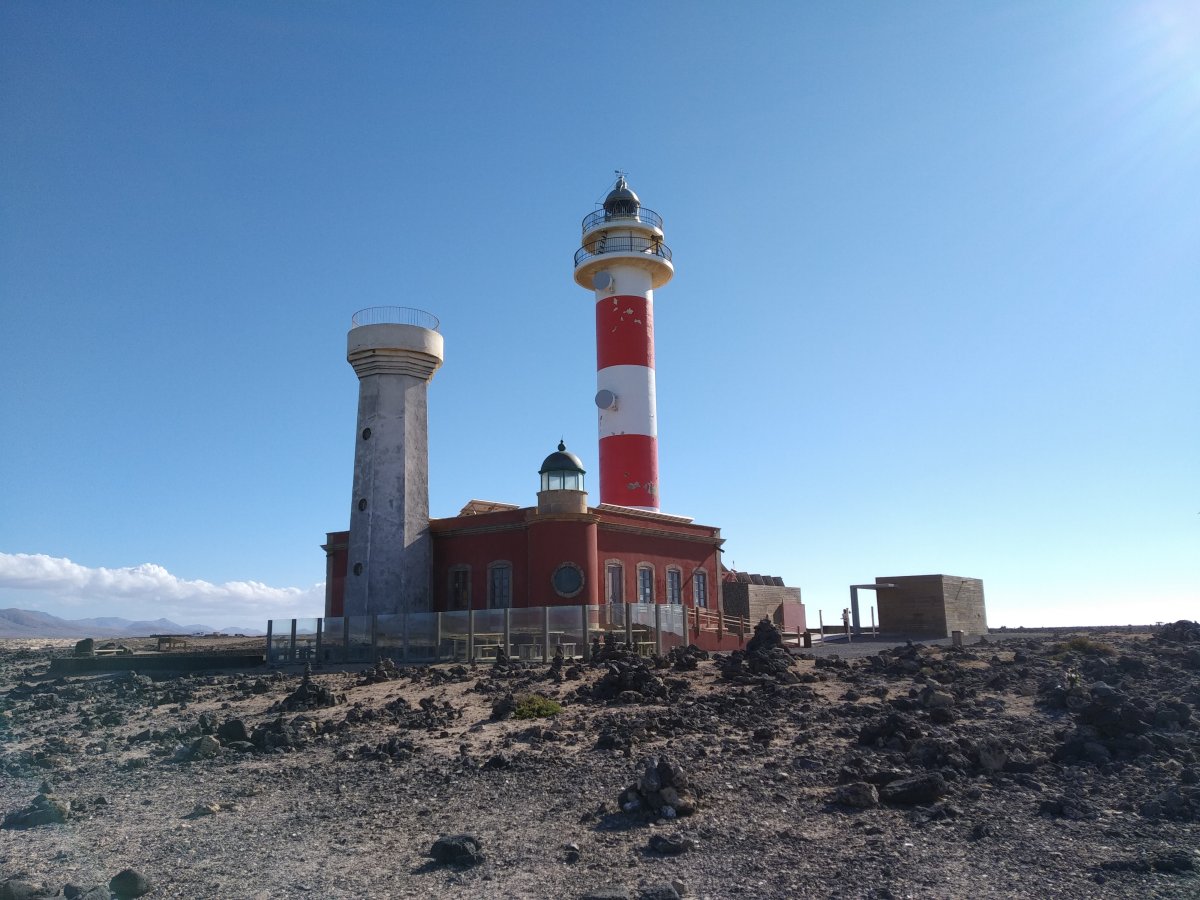
Lajares
Lajares is recommended in the Lonely Planet because of its cafés. Yes, the cafés are there, but there is nothing else of interest.
La Oliva
La Oliva is a small village with an old church and gallery. You should also visit wind-mills Molinos De Villaverde nearby. Careful, that the road does not go all the way to them, but it changes to a bumpy dirt road. Therefore, it is better to leave the car next to the main street and walk to the windmills.
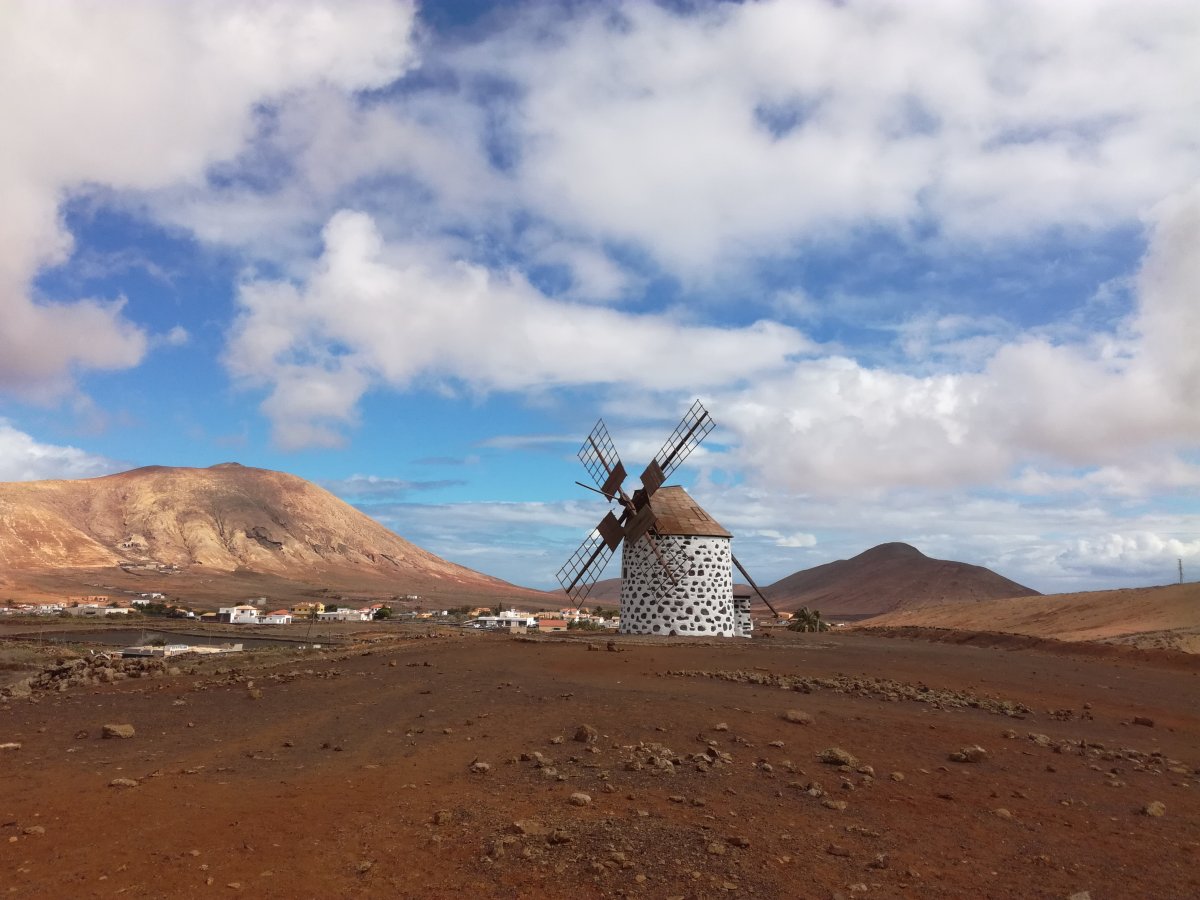
Museo del Queso Majorero
Even though the Fuerteventura may appear dry and barren, they breed the majorero goats there and make cheese from their milk (under different brands). You can learn more about how the cheese was produced in the past and how it is produced nowadays in Museo del Queso Majorero. I really liked the museum as the exposition was well prepared and entertaining. The area includes also a windmill and cactus garden, so leave yourself enough time to visit all those places. And speaking about the goats - be careful as you can encounter them all over the island next to the road or even crossing the road.
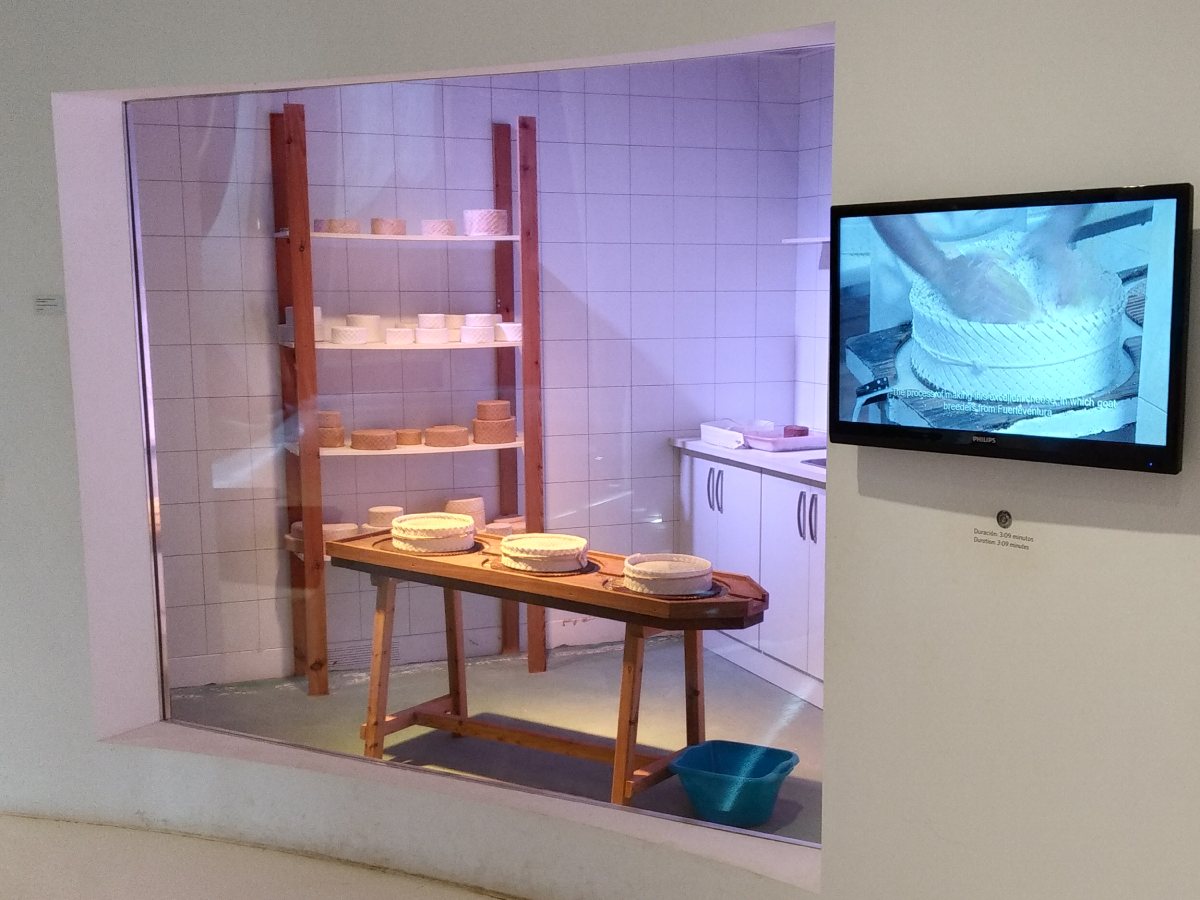
Antigua and Pulido Alonso
I already mentioned Pulido Alonso café, but the one in Antigua is special for us. When we were heading to Corralejo for a ferry after two weeks in Fuerteventura, we realized we have too much time. So, we decided to stop for coffee. Antigua happened to be nearby, and we chose the Pulido Alonso by the rating. We had great coffee and cakes there.
Betancuria
Betancuria used to be capital of Fuerteventura in the past. Apart from other things, you can visit the church from 15th century. The city is like Charles Castle near Prague in one aspect - everything is closed after 5PM. Close to Betancuria you can visit statues of ancient kings and admire the views.
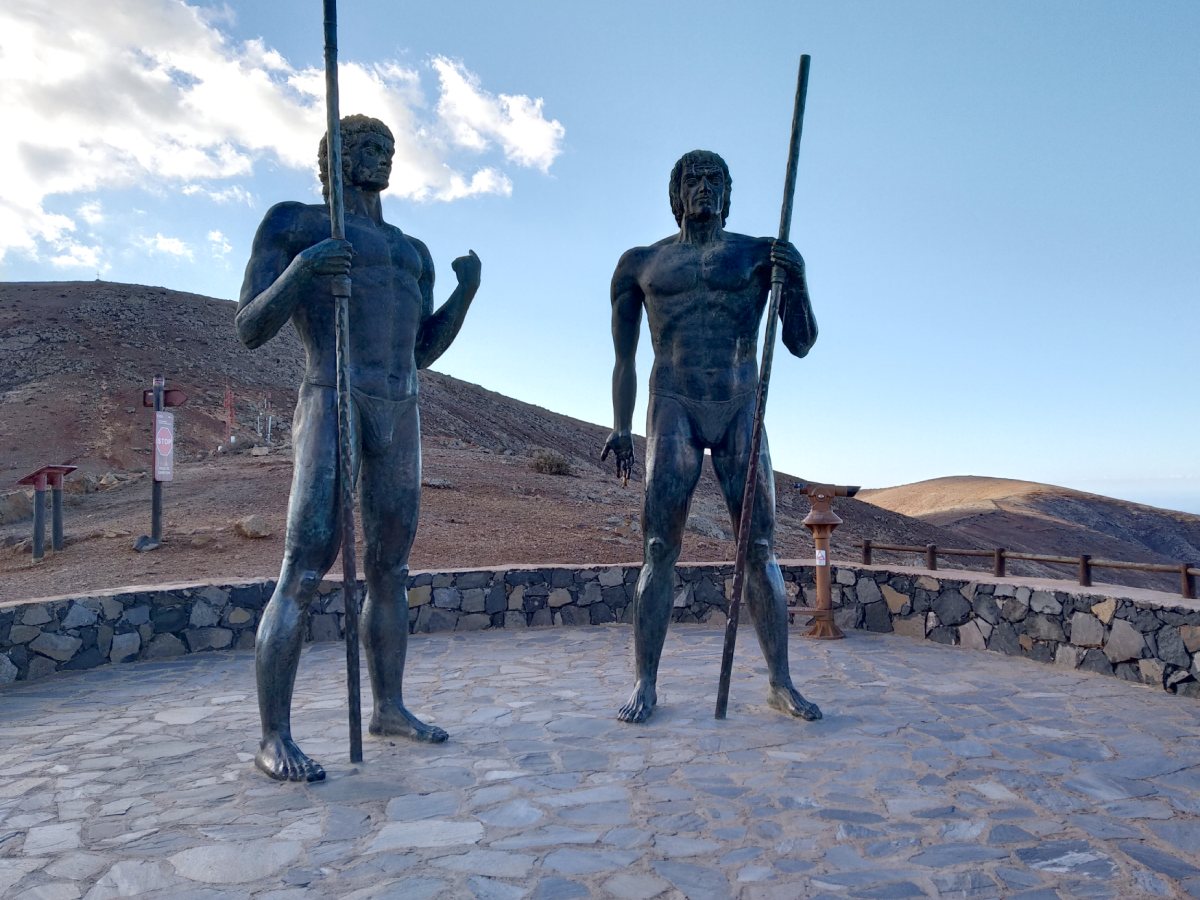

Parque Natural Dune De Corralejo
Sand dunes near Corralejo. You can park easily on this parking place. If you never have been to sand dunes, I recommend this one hundred percent, it's a great experience (you can visit another in Maspalomas in Gran Canaria). Don't forget to bring your sun cream! The sun is really strong in the dunes. Between the sand dunes and the Corralejo, you can find some nice beaches. But we didn't swim there in the end, because when we arrived there was a yellow warning flag and before we took our things from the car, lifeguard swapped it for the red one.
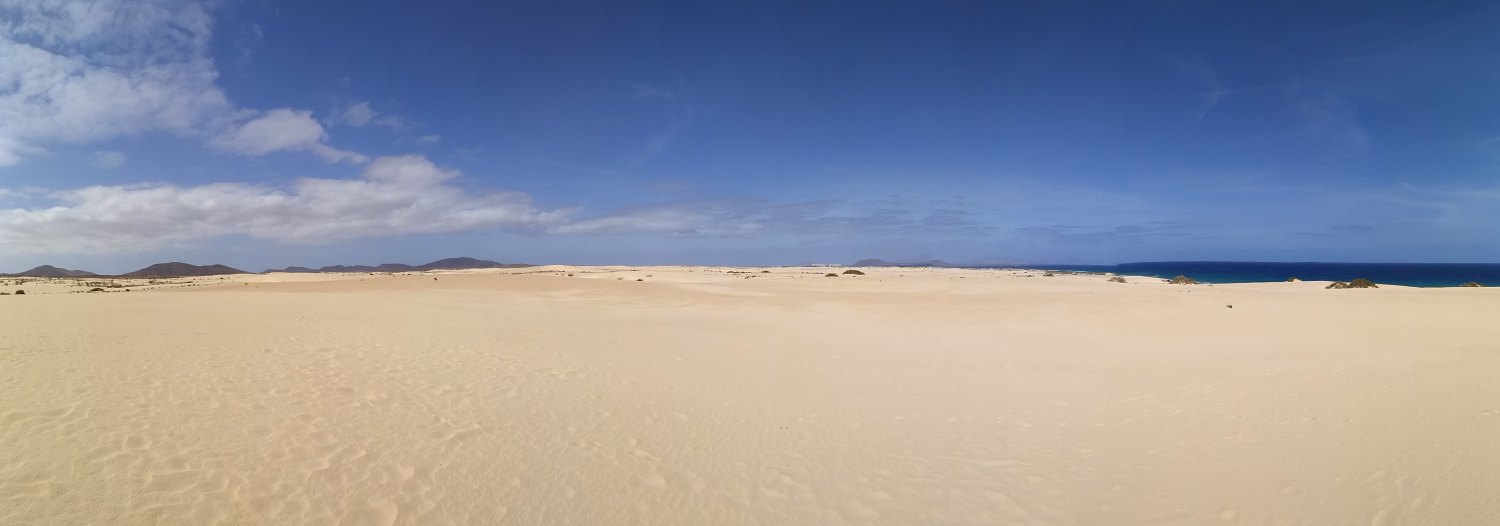
But it wouldn't be us to spend whole day walking around on dunes. Instead we hiked to the nearby hill Montaña Roja. You can check the recorded map in Wikiloc. If you watch the map carefully, you can see that we parked unnecessarily far. But from the car, all the places appeared to have to big curb to park there and I didn't want to break the car. But when we walked there, we realized that at least two places are suitable for parking, so I marked them in the map. And the view from the Montaña Roja was spectacular.
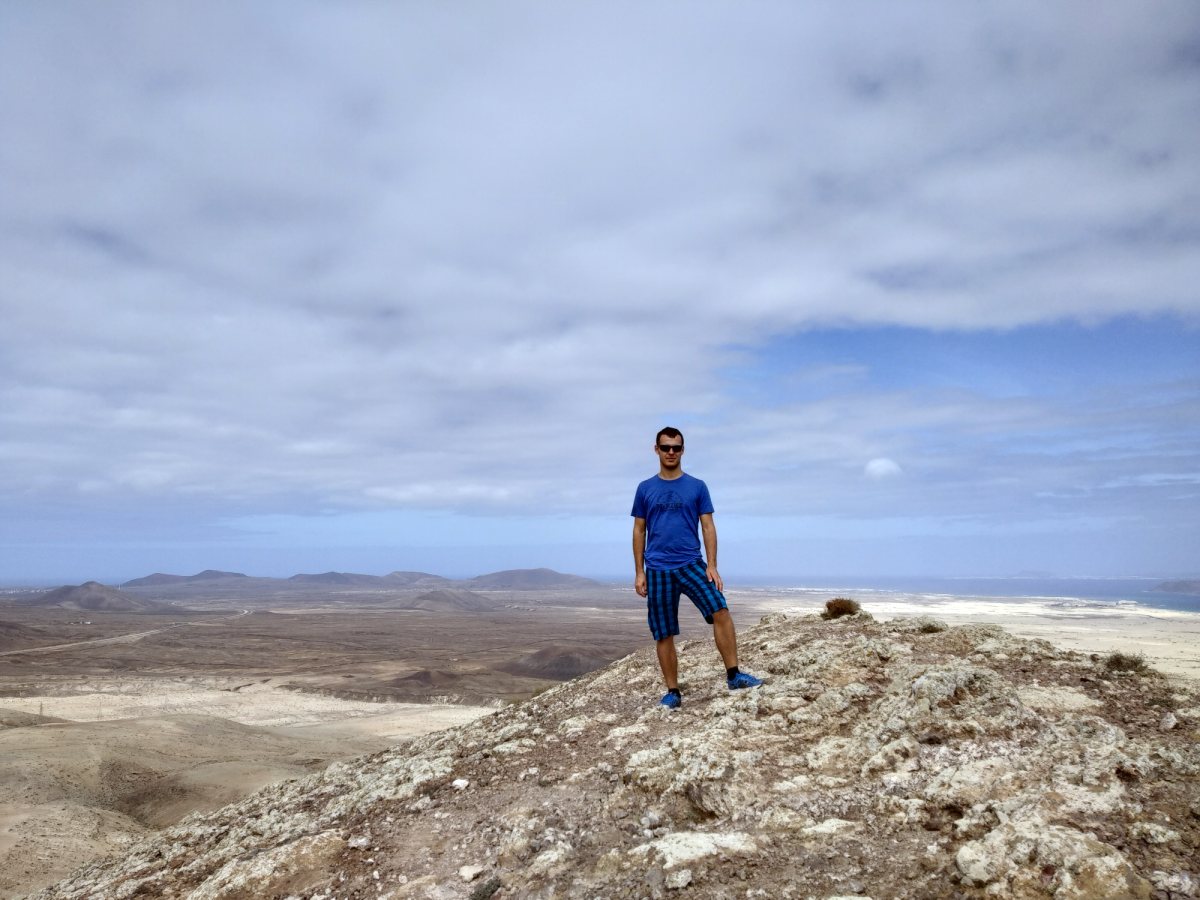
Salinas del Carmen
You can either get salt from salt mines or you can let the sea water dry up. That's how they did it in the past and how they do it now in the museum of salt production Salinas del Carmen. They have nice indoor exposition, but the main part is outside, where you walk through the whole process of salt production.
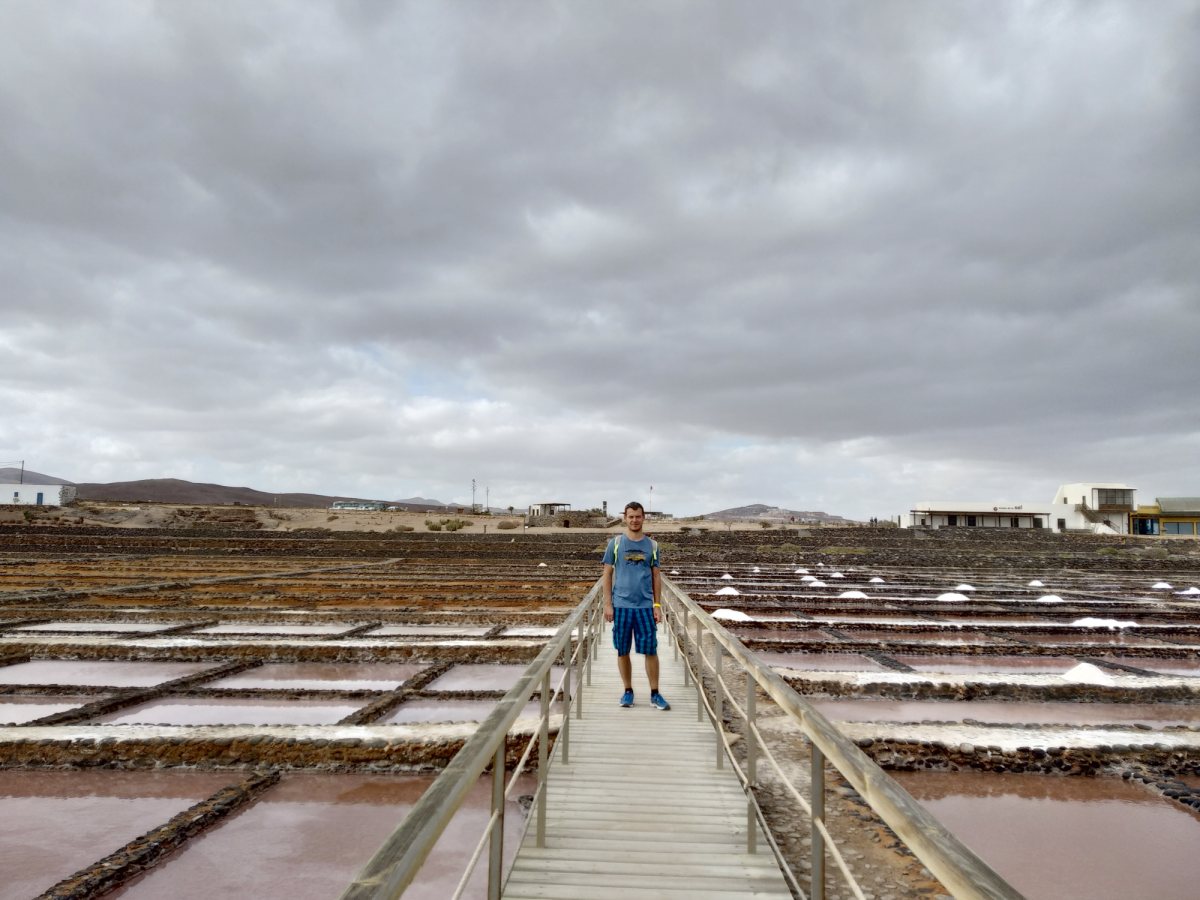
Pájara and a viewpoint on FV-605
When we drove somewhere and we had enough time, instead of using main road (FV-1, FV-2), we used some small scenic road over the hills and villages (FV-605). This way we visited village Pájara. You can find several interesting things there - church from 17th century, dried-up river and a roundabout with a statue of man milking a goat.
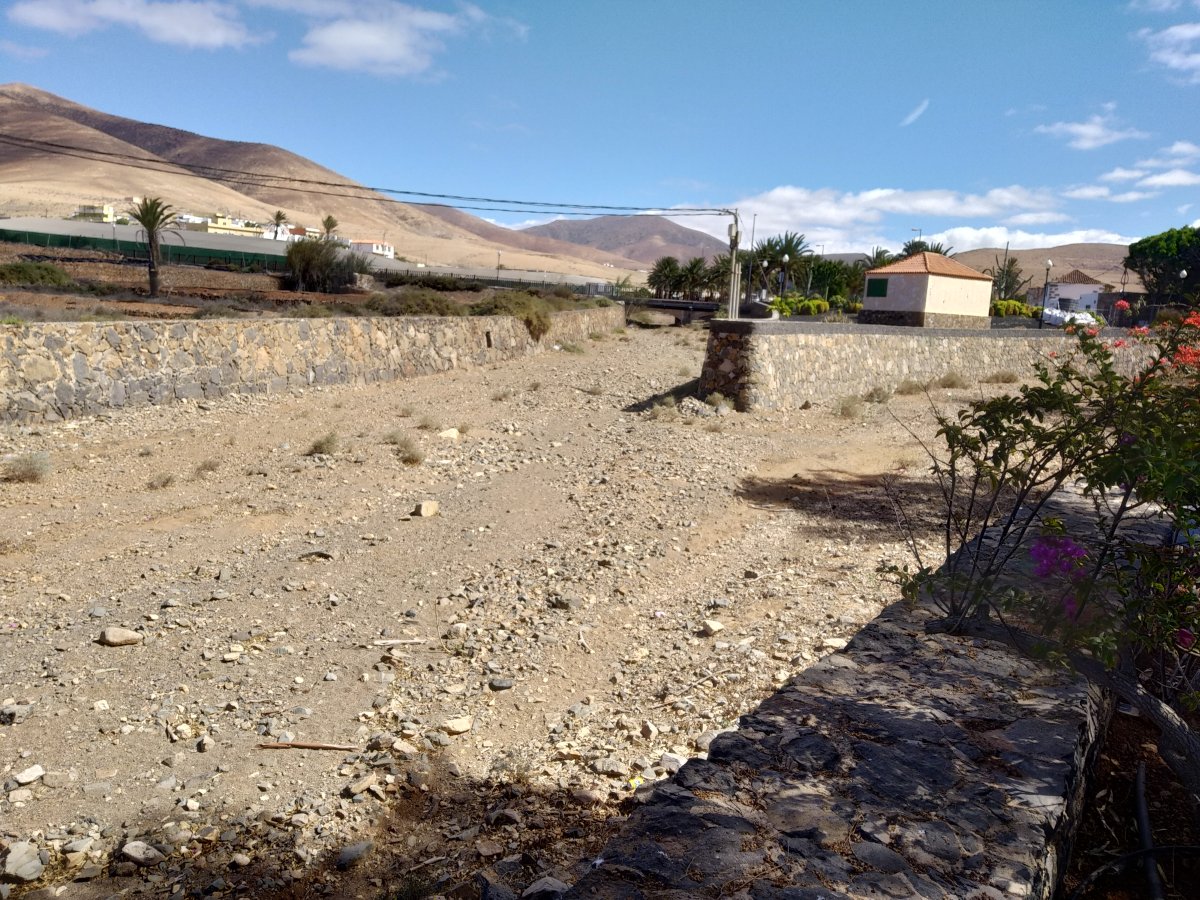
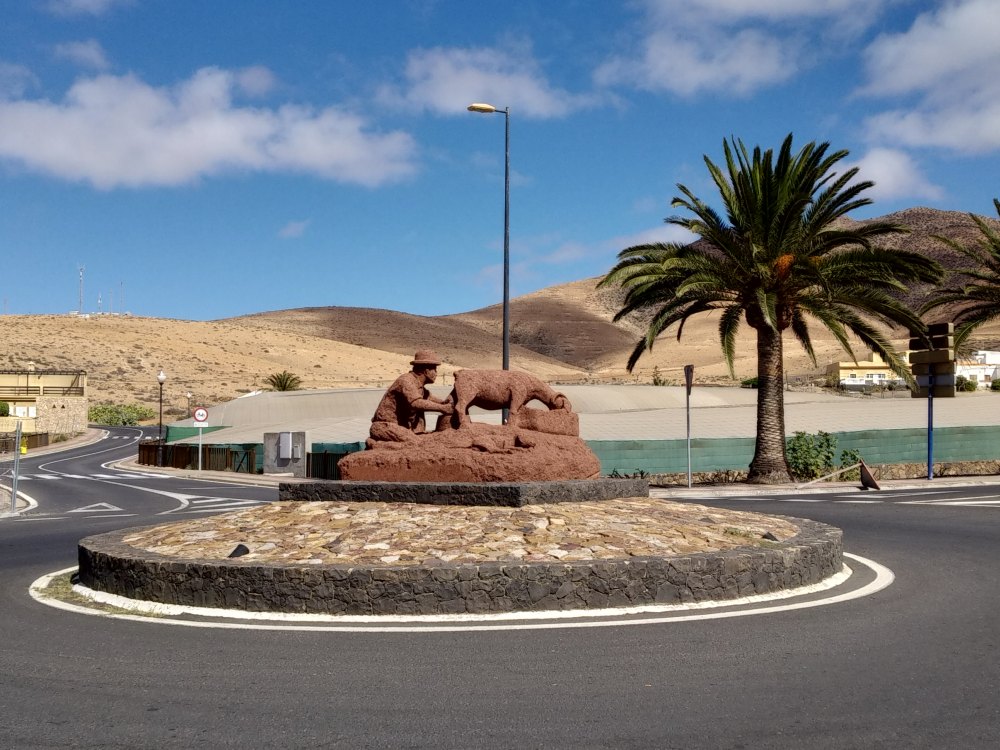
If you follow the FV-605 south from Pájara, you can stop at perfect viewpoint
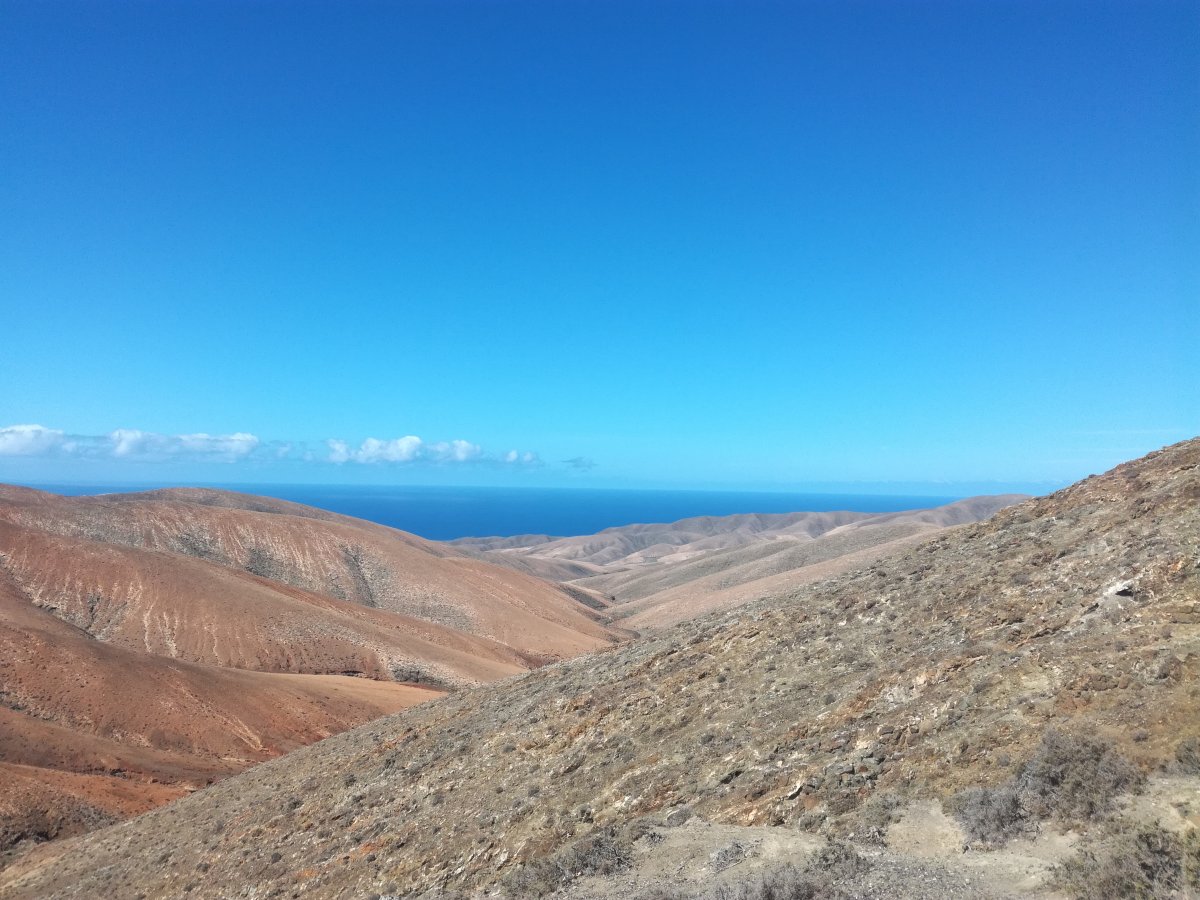
Pozo Negro
Fisherman village in the end of the road. There is a black-sand and pebble beach and two cafés.
Faro de la Entallada
Faro de la Entallada is a lighthouse on the cliff with a great sea view. Last part of the road is really narrow and with few guardrails, so be careful.
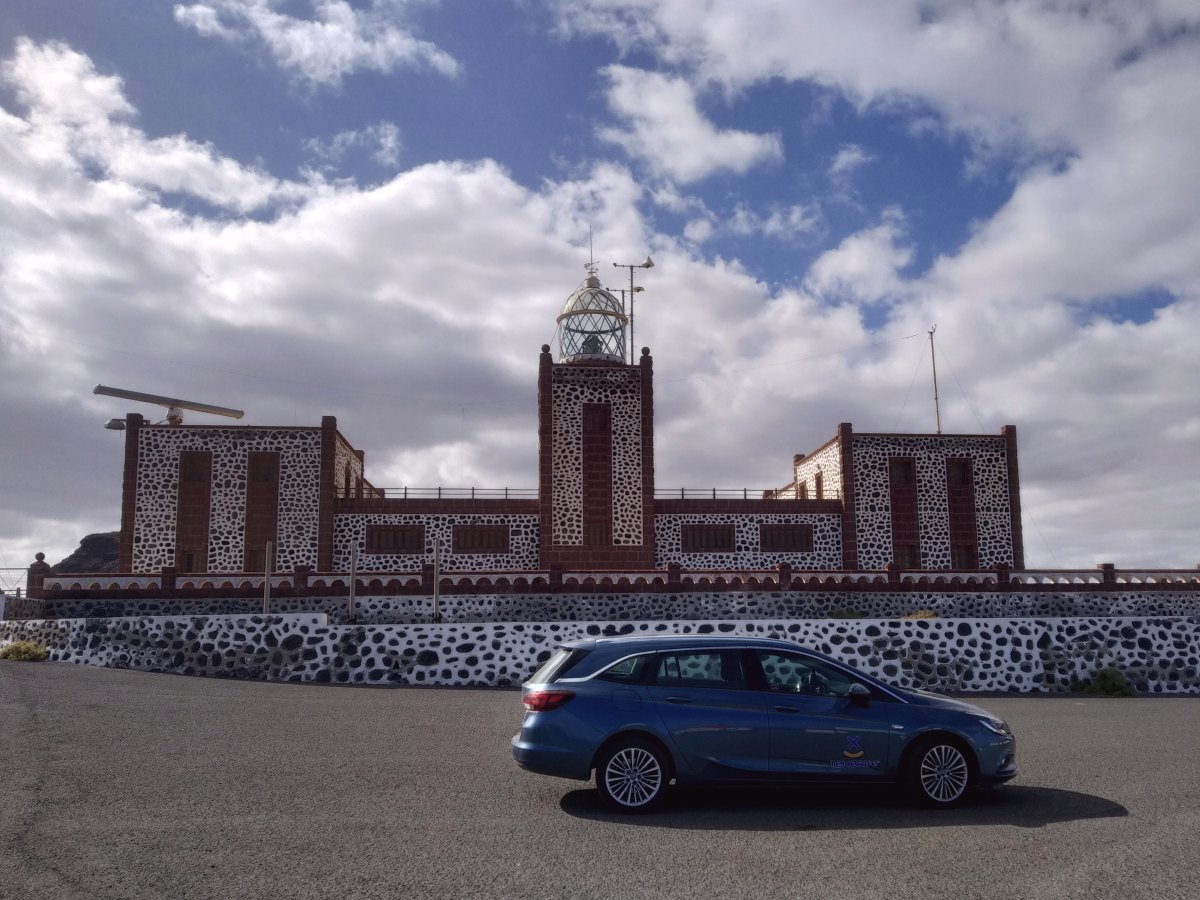
Mirador del Salmo
View point Mirador del Salmo is worth visiting when you are driving nearby. It is just next to the road.
Pico de la Zarza
Pico de la Zarza (sometimes also called Pico de Jandía) is the highest mountain of Fuerteventura. Although it has only 807 meters above sea level, you are starting at 0 m. The hike is about 15 km and you can check our walk on Wikiloc. We started the ascent at 9AM and luckily it was partly cloudy on that day. Don't forget to bring enough water and something to cover you head, because there is no place to hide from sun. We parked unnecessarily far; we could have parked at the place where the dirt road started. From the top of the mountain you can admire great views also to the north side of the island.

Cofete
Cofete is a nice beach on the northern side of the island. Swimming is forbidden there because of the strong sea currents. You can get there either by car (by the dirt road) or by a special 4x4 bus from Morro Jable. It goes from Estación de Guaguas (=main bus station). It is a line L111 and it takes only 18 people, so be there early.
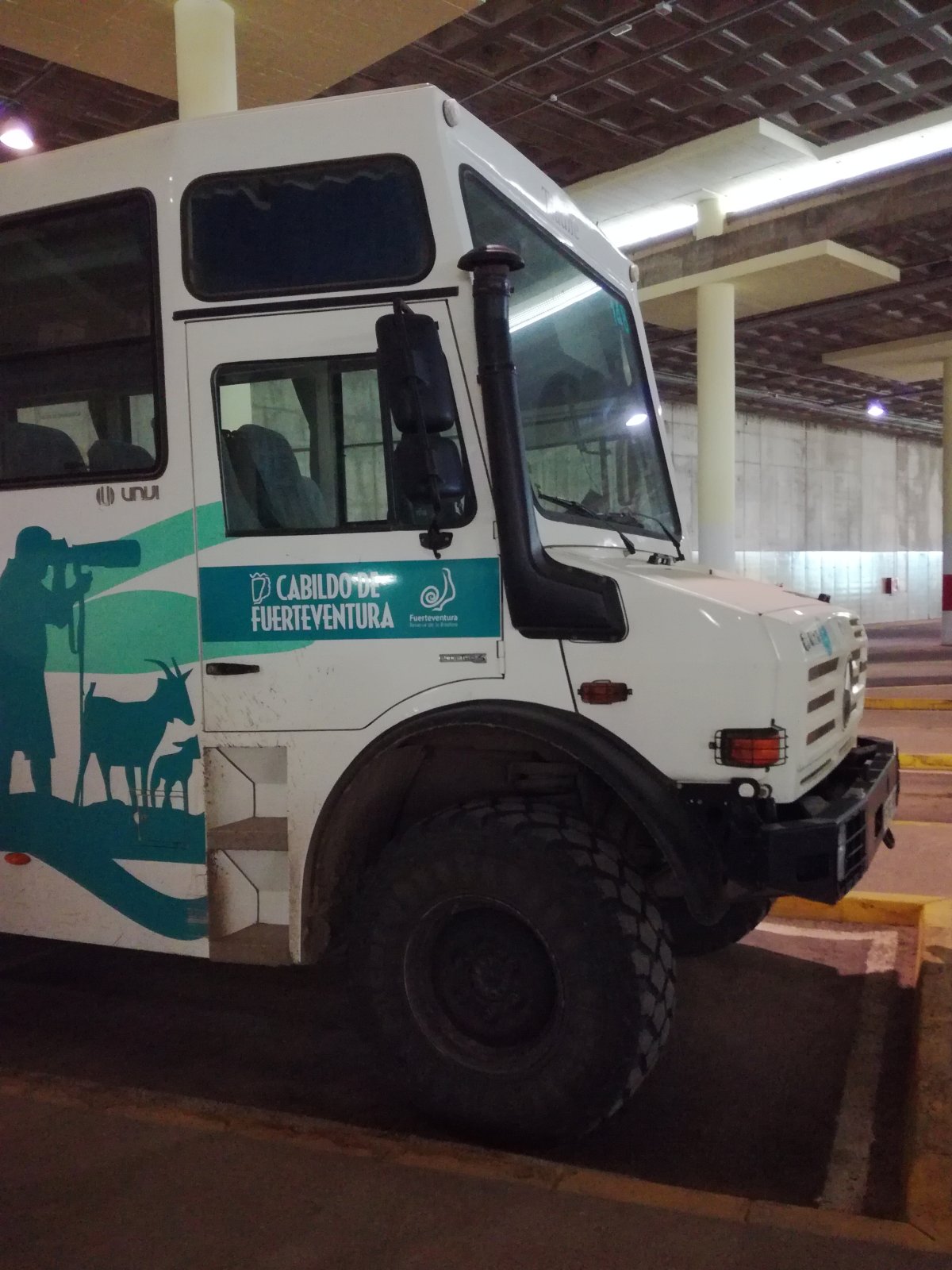
You can get back by the same bus or you can hike back over the hill (12 km). Our walk on Wikiloc.
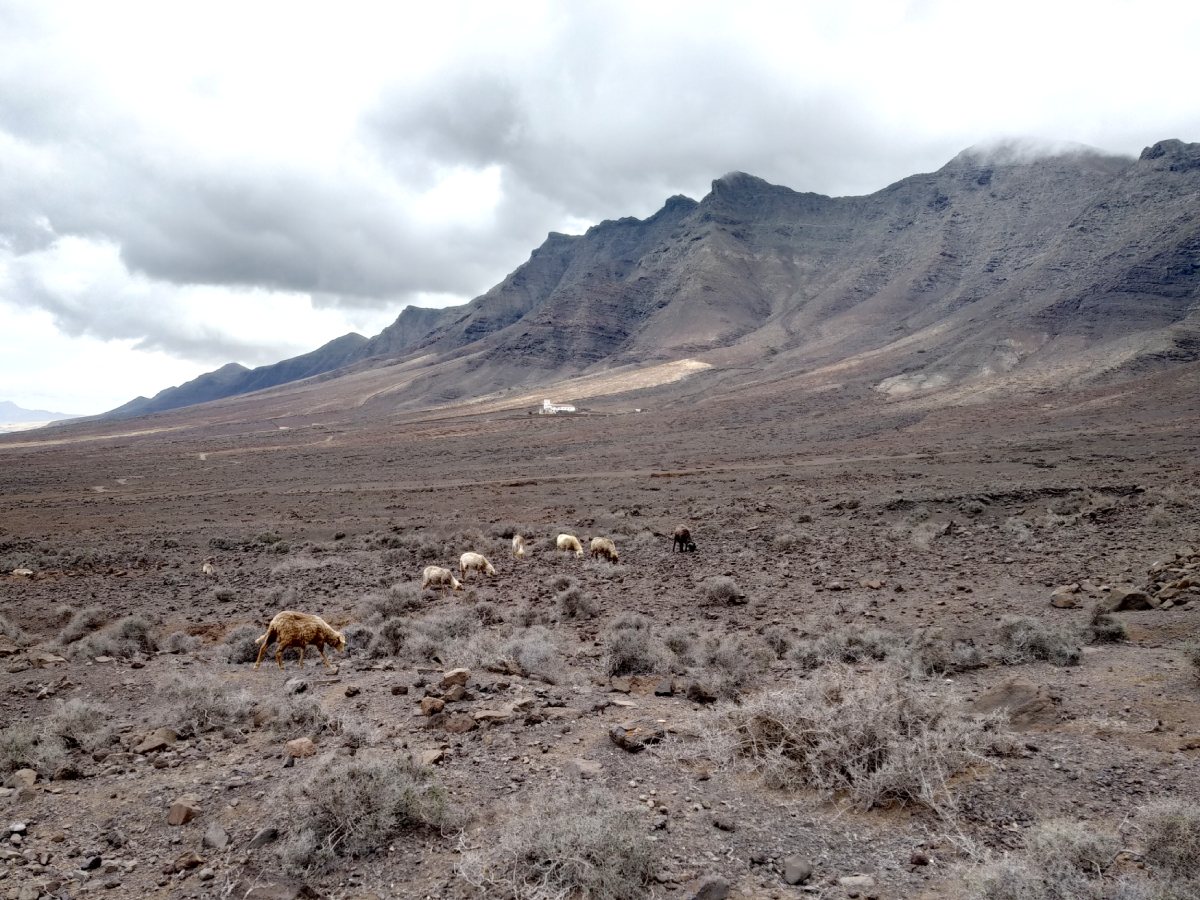
Islote de Lobos
Islote de Lobos is a small island not far from Corralejo. You can take a tourist boat there. This is the only thing from the whole article we have kept unvisited for the next time. But I include it here for the sake of completeness.
Conclusion
Although we didn't spend that much time on Fuerteventura, we managed to do lot of things and visit lot of places. Having a rental car for the whole time really helped, because we could do just a short trip in the afternoon which won't be possible if we went by bus.
If you go to Fuerteventura and have enough time, I recommend spending at least a week on Lanzarote, where are also many things to see.